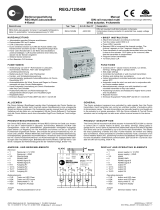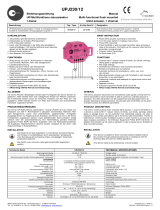
17
How manual operation works
Manual operation with the ETS setting "Manual operation only"
In manual operation, the blind actuator will not react to EIB telegrams,
nor to safety alarms. This setting can be useful when carrying out
maintenance, for example.
½Caution! When operating blinds in "Manual operation only" using
the channel keys, safety functions such as the weather alarm
position, alarm position, lock position or travel range will no longer
work. To prevent damage to the blind, you should therefore practice
great care during manual operation.
|Note: Make sure that the ETS parameter "Manual operation type"
is set to "Bus and manual operation" (not "Manual operation only"),
when you hand over the system to the operator.
A further function which can be set in the ETS is time-limited manual
operation. With this function, you can set a time period after which
manual operation (including "Manual operation only") will be cancelled
automatically; the blind actuator will then react to EIB telegrams again.
How to set the blind actuator to manual operation
Figure !:
1Press the toggle key "Manual operation" E.
– The red LED D will light up. The blind actuator is in manual
operation.
– The green operational LED "RUN" C goes out when "Manual
operation only" is set in the ETS.
– The green operational LED "RUN" C remains on when "Bus and
manual operation" is set in the ETS.
How to end manual operation
1Press the toggle key "Manual operation" E again.
The red LED D will go out. The green operational LED "RUN" C will light
up. The blind actuator will now only react to EIB telegrams.






















